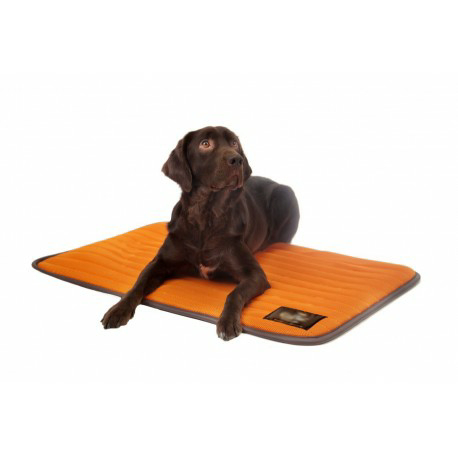Coming across many dog patients who turn immobile or even less mobile due to various reasons makes anyone's heart break. Their life could be miserable. So are the lives of their owners. This article is dedicated to such pets and their pet owners to know that the dog's quality of life won't be that bad as you think it would
Taking care of immobile dogs is not an easy task. While you follow your veterinarian recommendations consider the following tips as well for your pet's betterment
1. Resting
Certain health conditions need resting to recover. If your vet has recommended complete resting, it means 100% rest. Not 99%. Cage or prepare a boundry around your dog where the length is a little more than the dog's length and the breadth of the cage being a little bit more than the dog's height, basically the space being only enough for the dog to sit, sleep and turn around. Until when, is the next question. Until your veterinarian recommends. Certain diseases need long term rest for about 6 months and some cases only need resting for about 3 days
Note the length and the width of this crate; as means of complete crate rest
Source: http://www.thesedogdays.com
2. Fomenting
There are two main ways; hot fomenting and cold fomenting. Depending on the dog's condition your veterinarian will decide which method to adopt. Infra red ray therapy with an Infrared lamp can also be used as therapy
3. Removing excreta
This is never an easy task but important to talk about. Do not let the immobile dog get soiled. Always, Always keep the dog's rectal region and the genitalia clean and dry. Moisture can attract bacteria, flies, maggots and all sorts of organisms which can be a hassle to the dog's quality of life. Always use clean cloth to wipe the dog. Spray veterinary fly repellent sprays around where you dog is. Diapers can be used once in a while when you're unable to remove excreta as soon as the dog passes it (if you're leaving the house for a few hours or if you're involved in some important matter). Diapers are not recommended on dogs for full time use as it can cause sores on the skin
4. Avoiding pressure sores
If completely immobile, turn the dog from one side to the other every two hours. Use baby talc, smooth rugs or cloth to avoid rough surfaces
Source: http://www.thesedogdays.com
5. Massaging
The immobile limbs of the dog should be given a thorough massage everyday. The unused limbs will get atrophied if left alone for a long time. Add your digital pressure on the dog's limb muscles to massage. A twice daily massage for about 10-15 minutes would do
6. Swimming or hydrotherapy
Depending on the illness or the stage of the dog your veterinarian may recommend swimming. Hydrotherapy facility for dogs is now available in Sri Lanka: Pet physio
7. Water beds
It's a solution to pressure sores. For the moment they are not available in Sri Lanka but can get it imported
8. Wheels for dogs
This is a way of improving an immobile dog's quality of life. Remember that only certain illnesses will indicate a necessity of wheels on a dog. This facility is also available in Sri Lanka: KennelSri
Source: https://www.desertcart.lk
Is your dog unable to walk? What other remedies do you adopt to improve his quality of life? Share with me in the comments below
Have a peaceful day folks!




Comments
Post a Comment